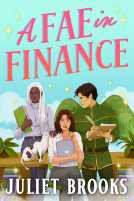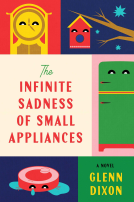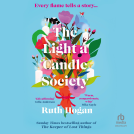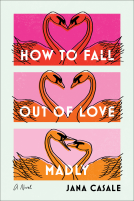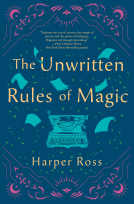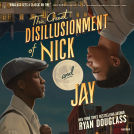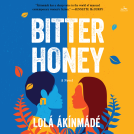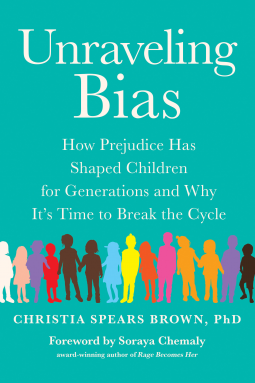
Unraveling Bias
How Prejudice Has Shaped Children for Generations and Why It's Time to Break the Cycle
by Christia Spears Brown
This title was previously available on NetGalley and is now archived.
Send NetGalley books directly to your Kindle or Kindle app
1
To read on a Kindle or Kindle app, please add kindle@netgalley.com as an approved email address to receive files in your Amazon account. Click here for step-by-step instructions.
2
Also find your Kindle email address within your Amazon account, and enter it here.
Pub Date Nov 30 2021 | Archive Date Mar 01 2022
Talking about this book? Use #UnravelingBias #NetGalley. More hashtag tips!
Description
“Timely, informative, thought-provoking, inspirationally motivating.” —Midwest Book Review
"[Brown] offers pragmatic advice for teachers on how to stand up for diversity and inclusiveness in the classroom." —San Francisco Book Review
We need only scan the latest news headlines to see how bias and prejudice harm adults and children alike—every single day.
Police shootings that give rise to the Black Lives Matter revolution . . . rampant sexual harassment of women and the subsequent #MeToo movement . . . extreme violence toward trans men and women.
It would be easy to fix these problems if the examples stopped with a few racist or sexist individuals, but there are also biases embedded in our government policies, media, and institutions.
As a developmental psychologist and international expert on stereotypes and discrimination in children, Dr. Christia Spears Brown knows that biases and prejudice don’t just develop as people become adults (or CEOs or politicians). They begin when children are young, slowly growing and exposed to prejudice in their classrooms, after-school activities, and, yes, even in their homes, no matter how enlightened their parents may consider themselves to be. The only way to have a more just and equitable world—not to mention more broad-minded, empathetic children—is for parents to closely examine biases beginning in childhood and how they infiltrate our kids’ lives.
In her new book Unraveling Bias: How Prejudice Has Shaped Children for Generations and Why It's Time to Break the Cycle, Dr. Brown will uncover what scientists have learned about how children are impacted by biases, and how we adults can help protect them from those biases. Part science, part history, part current events, and part call to arms, Unraveling Bias provides readers with the answers to vital questions:
• How do biased policies, schools, and media harm our children?
• Where does childhood prejudice come from, and how do these prejudices shape children’s behavior, goals, relationships, and beliefs about themselves?
• What can we learn from modern-day science to help us protect our children from these biases?
Few issues today are as critical as being aware of bias and prejudice all around us and making sure our kids don’t succumb to them. To change lives and advance society, it’s time to unravel our biases—starting with the future leaders of the world.
Available Editions
| EDITION | Other Format |
| ISBN | 9781953295552 |
| PRICE | $17.95 (USD) |
| PAGES | 288 |
Average rating from 4 members
Featured Reviews
Yes!
I attended a training about implicit bias a few years ago and as a mom have been trying to implement some of the recommendations to combat bias in my kids.
This book lays out our nation’s historical bias, what is happening today and clear ideas to move forward in a way that all children are treated in a fair, inclusive manner.
Anyone who teaches, parents, coaches, or works with children or families in any way should absolutely read this book.
This book pictures what unconscious (and conscious) bias can ultimately lead to and how and why it's (naturally) developed. Brown also shows how we can change our internalized biases and avoid handing down bias to our children. Educational and insightful!
“First, we have to move past assumptions that well-meaning adults don’t unintentionally pass along biases to children and that children are exempt from biases simply because they are young. Second, we have to accept that bias is pervasive and harmful, and reducing bias is everyone’s responsibility.”
This was a book I was excited to dive into! As a teacher, I’m constantly trying to identify bias and work on fixing patterns and behaviors built upon prejudice. I learned a lot of relevant information, including:
📚 how and why biases form, and the age levels where perceptions are more rigid than others.
📚 the effect that exposure to diversity has on bias.
📚 how children internalize nonverbal cues, so when conversation about prejudice isn’t happening, the nonverbal cues of the adults around them are how they learn to see and react to others.
📚 that being the target of discrimination results in worse grades, higher dropout rates, lower self-esteem, more depression, more thoughts of suicide, more delinquency, more drug use, more aggression, and more health issues.
📚 the importance of court cases in moving social processes forward; the “laws sometimes need to change first and people’s attitudes and beliefs will follow.”
📚 how the court decision to desegregate in the US had so much leniency that many districts never did, and others found loopholes to continue serving primarily white families. The number and types of loopholes were shocking, and I thought I knew a bit about this already.
📚 tips on how to talk with children about bias in a way that is helpful in confronting and overcoming it.
One thing I didn’t love was that disability wasn’t covered at all. There are so many biases concerning physical and/or mental disabilities, but this wasn’t more than a mention in the book. Yes, I know entire books could be written on this topic alone, but the audience of this book is looking at bias in children and I feel that this should have been addressed. Otherwise, I really enjoyed the book and learned a lot from it!
Thanks to NetGalley and BenBella books for this Advanced Reader Copy!
Readers who liked this book also liked:
Glenn Dixon
General Fiction (Adult), Literary Fiction, Sci Fi & Fantasy
Lolá Ákínmádé Åkerström
General Fiction (Adult), Multicultural Interest, Women's Fiction
We Are Bookish
Mystery & Thrillers, OwnVoices, Teens & YA

